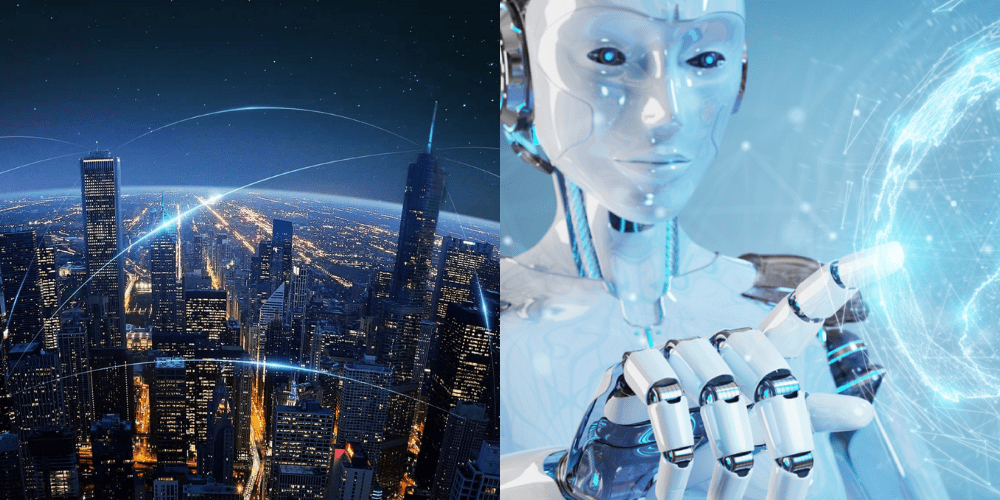In 2021, the AI industry is set to witness groundbreaking technological advancements that will have significant impacts on various sectors, including healthcare, finance, and agriculture. AI software and services are booming, leading to increased automation, customer satisfaction, reduced costs, and a competitive edge. Conversational AI is gaining popularity, improving customer interactions, and saving time. Edge computing with AI is essential for real-time analysis and critical applications such as autonomous vehicles and medical devices. AI has significantly revolutionized the education sector, enabling teachers to provide a personalized experience to students. AI-powered natural language generation is used to create high-quality content, leading to personalized experiences using AI. Furthermore, AI is disrupting the financial sector by identifying risk, preventing fraud and money laundering, and providing personalized financial advice.
10 Exciting Trends in AI Technology to Watch Out for in 2021
Artificial Intelligence (AI) technology is advancing at an unprecedented rate, and its impact on the world is significant. AI applications are reshaping the way we work, interact, and conduct business. From healthcare to finance, AI is revolutionizing industry after industry. Here are some exciting trends to look out for in AI technology in 2021.
1. Exploding growth in AI services and software
As AI technology matures, the demand for AI services and software is exploding. With the availability of AI-powered solutions, businesses can easily automate their processes, reduce costs, improve customer satisfaction, and gain a competitive edge. Companies offering AI-as-a-service (AIaaS) are growing exponentially. According to Reports and Data, the global AIaaS market will reach $15.06 billion by 2026, at a CAGR of 37.2%.
2. The rise of conversational AI
Conversational AI, also known as chatbots or virtual assistants, is gaining popularity due to its ability to automate customer service interactions, save time, and improve efficiency. It allows businesses to communicate with customers in real-time, 24/7, enhancing the customer experience. According to Gartner, by 2022, 70% of white-collar workers will interact with conversational AI daily, up from 2% in 2019.
3. Enhanced cybersecurity using AI
AI is improving cybersecurity by identifying and preventing cyber attacks faster than ever before. AI-powered cybersecurity solutions can detect and respond to cyber threats in real-time, reducing exposure and mitigating potential damage. With AI-powered cybersecurity tools, businesses can prevent data breaches, protect their customers’ personal information, and secure their systems.
4. Edge computing with AI
Edge computing is the practice of processing data close to its source rather than in the cloud. AI algorithms can now be deployed to edge devices, such as cameras and drones, allowing them to perform complex tasks independently without relying on cloud servers. This approach reduces latency, makes real-time analysis possible, and is essential for mission-critical applications such as autonomous vehicles and medical devices.
5. AI in healthcare diagnosis and treatment
AI is driving advances in medical diagnosis and treatment by enabling doctors to make more precise and timely diagnoses. AI algorithms can analyze vast amounts of medical data, identify patterns, and suggest treatment plans. AI can also help optimize resource allocation in hospitals, improve patient outcomes, and reduce medical errors.
6. AI in agricultural innovation
AI is transforming the agricultural sector by providing farmers with real-time insights into crop health, soil moisture levels, and other environmental factors. Farmers can use AI-powered sensors and drones to monitor their fields, detect issues early, and take corrective actions to maximize yields. AI-powered predictive models can also help optimize farming operations and reduce waste.
7. AI-powered natural language generation
AI is rapidly improving natural language generation, allowing businesses to create high-quality content quickly and efficiently. AI-powered tools can generate articles, reports, and summaries in different languages and styles, freeing up valuable resources for other critical tasks.
8. Personalized experiences using AI
AI is revolutionizing customer engagement by providing personalized experiences based on individual preferences and behaviors. AI-powered recommendation engines are used by e-commerce sites, streaming services, and social media platforms to suggest products, movies, and content that align with a user’s interests.
9. AI in education
AI is transforming the education sector, allowing teachers to provide personalized learning experiences to students. AI-powered models can analyze student data to identify strengths and weaknesses, suggest teaching strategies, and provide targeted feedback. AI-powered chatbots can also assist students with homework, answering questions, and providing support.
10. AI in finance
AI is disrupting the financial sector by enabling banks and financial institutions to assess risk more effectively, identify fraud, and prevent money laundering. AI-powered chatbots and virtual assistants are also used to provide personalized financial advice and improve customer experience.
Conclusion
AI technology is advancing rapidly, and its potential to transform industries is enormous. In 2021, we can expect to see significant growth in AI software and services, the rise of conversational AI, enhanced cybersecurity, edge computing, AI in healthcare and agriculture, personalized experiences, AI in education, and AI in finance. As AI continues to mature, it will become more integrated into our lives, driving innovation, and improving efficiency.
